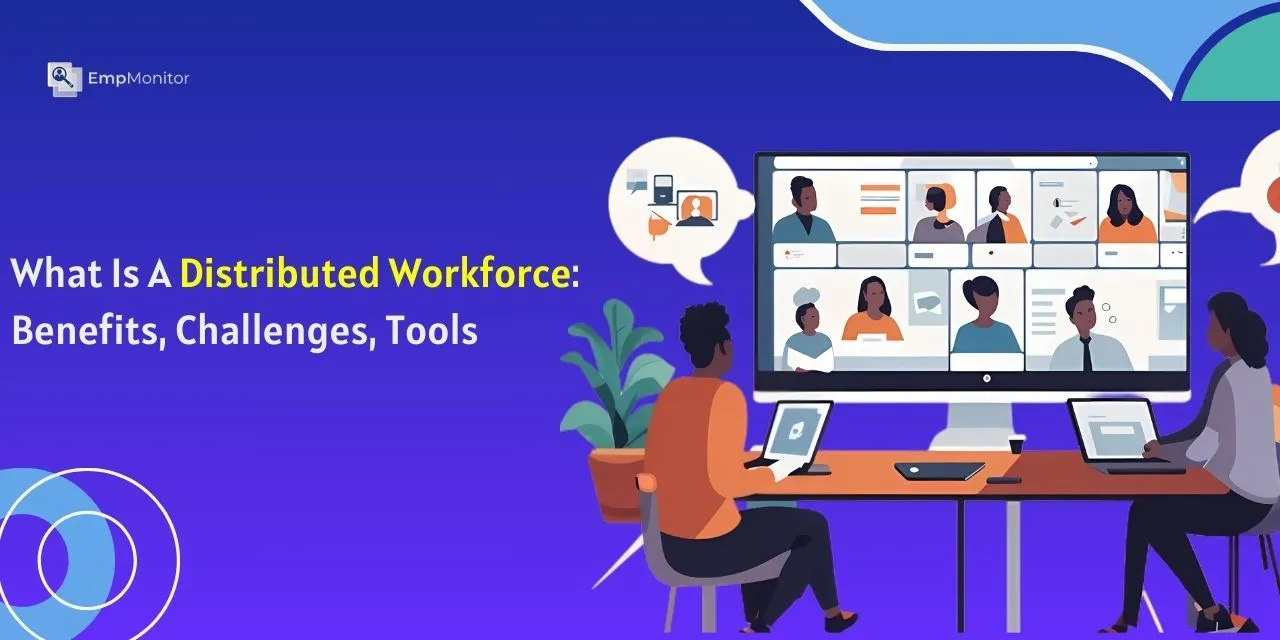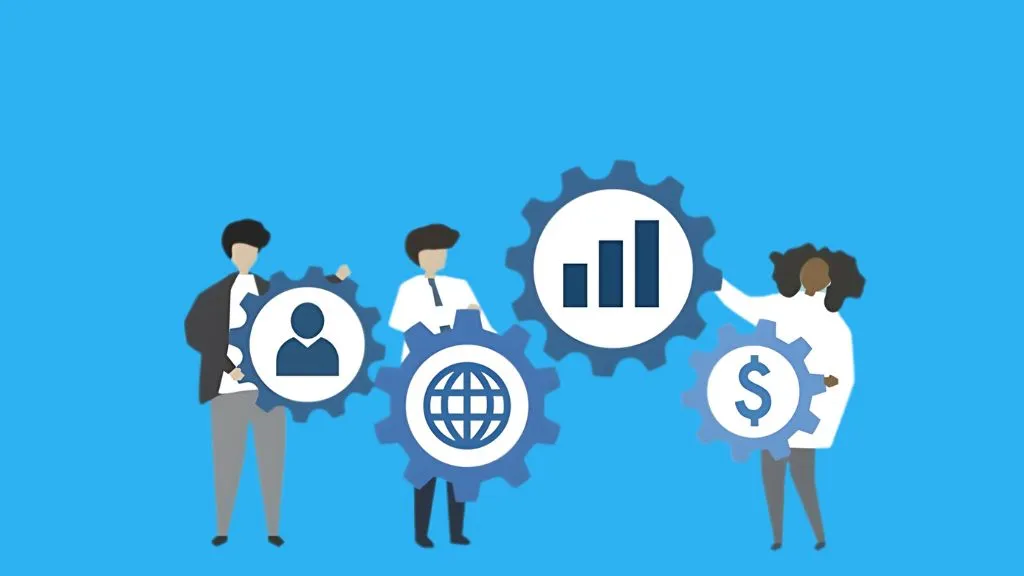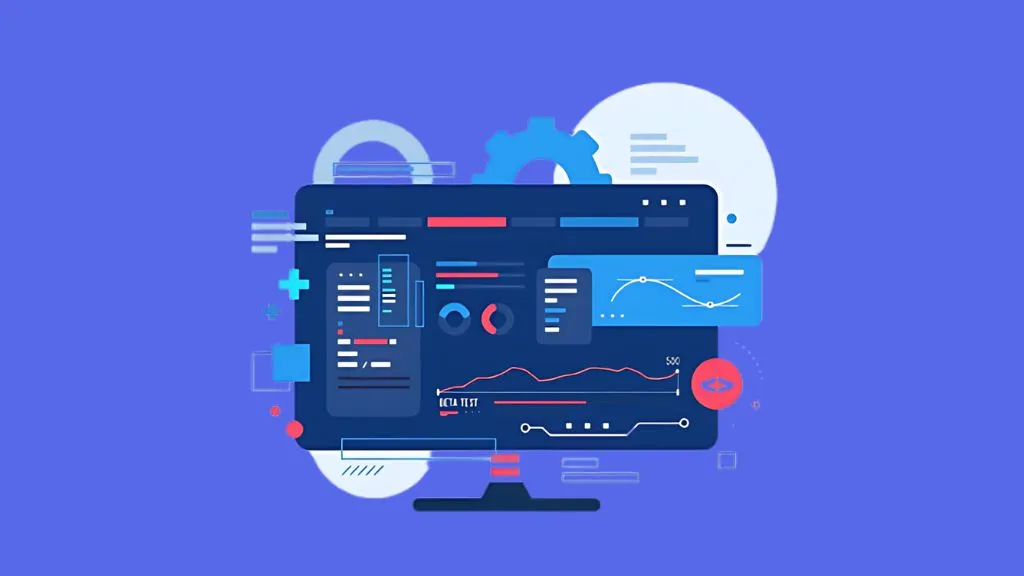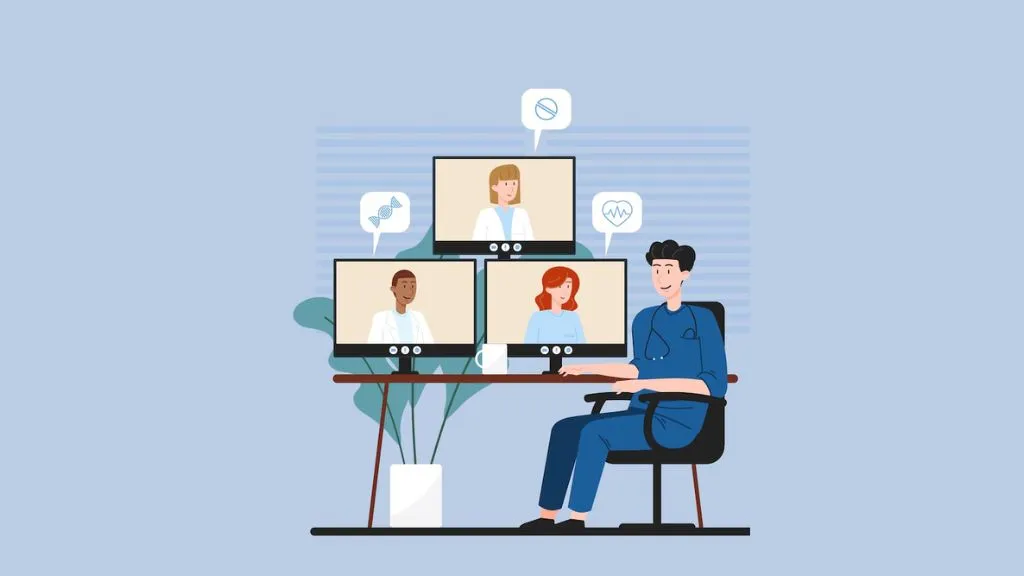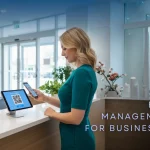The dynamics of the workforce have reshaped business operations globally, driving innovation and redefining traditional practices. Many companies shifted to a distributed workforce to adapt to lockdowns and social distancing.
A distributed team or workforce referring a team spread across various geographical locations, often working remotely. This model has not only helped businesses survive during challenging times but has also proven to enhance productivity and employee satisfaction.
The blog will explore the intricacies of managing such distributed teams, its benefits, effective strategies, essential tools, and best practices to ensure seamless operations. We will also delve into the evolution of this workforce model and its impact on modern business practices.
Listen To The Podcast Now!
Distributed Workforce: Benefits
A distributed workforce refers to a group of employees who work remotely, often from different locations, and contribute to the organization’s goals through technology. This shift towards remote work has been accelerated, leading many companies to adopt flexible work arrangements. A distributed team can offer numerous benefits for employees and companies:
Benefits Of A Distributed Workforce For Companies:
Increased Productivity: Employees often work more efficiently without the distractions of a traditional office environment.
Cost Savings: Reduced need for office space, utilities, and other overhead expenses.
Access to a Global Talent Pool: Ability to hire the best talent regardless of geographical location.
Enhanced Flexibility: Ability to quickly adapt to changing circumstances and business needs.
Business Continuity: Reduced risk of disruptions due to localized issues like natural disasters or pandemics.
Benefits of a Distributed Workforce for Employees:
Improved Work-Life Balance: Flexibility to manage work schedules around personal commitments.
Reduced Commuting Stress: Saves time and money spent commuting, leading to a better quality of life.
Greater Job Satisfaction: Increased autonomy and trust can lead to higher morale and job satisfaction.
Health and Wellbeing: More time for physical activities and healthier lifestyle choices.
Increased Opportunities: Ability to work for companies that may not be in the local area, opening up more career possibilities.
This workforce has various benefits for employees and organizations but comes with challenges. Further, we will explore some challenges.
Challenges Of Managing A Distributed Workforce
Managing such a workforce presents unique challenges that require innovative solutions. These are some common hurdles you may face:
Communication Gaps: Without the benefit of in-person interactions, messages can easily be misinterpreted, leading to confusion and delays. The lack of non-verbal cues makes it harder to convey tone and intent, increasing the potential for misunderstandings.
Employee Engagement: Keeping remote employees connected to the company culture and motivated in their roles can be challenging. Without the daily social interactions of an office, employees may feel isolated, which can impact their overall job satisfaction and productivity.
Performance Tracking: In a remote setup, it’s harder to monitor how employees spend their time and measure their output. Traditional oversight methods aren’t always effective, making it difficult to ensure everyone meets their targets and contributes to team goals.
Collaboration Issues: When team members are spread out geographically, coordinating efforts can be tricky. Differences in time zones can cause delays, and the lack of spontaneous in-person meetings can hinder the flow of ideas and quick problem-solving.
Data Security: With employees accessing company data from various locations, often using different networks and devices, there’s an increased risk of security breaches. Ensuring that sensitive information remains secure while being accessed remotely requires robust cybersecurity measures and protocols.
To overcome these challenges, we must first understand them. Let us explore the strategies to address these issues effectively.
Effective Distributed Workforce Strategy
Managing such a workforce requires a strategic approach. These are some effective strategies you must consider:
Clear Communication Channels: Establish robust communication channels using tools such as Slack, Microsoft Teams, or Zoom. Regular check-ins and virtual meetings can help maintain clear and consistent communication.
Set Clear Expectations: Establish clear guidelines by outlining roles, responsibilities, and performance metrics. It helps employees understand their expectations and reduces ambiguity.
Foster a Collaborative Culture: Encourage collaboration through virtual team-building activities and collaborative tools. It can help bridge the gap created by physical distance.
Provide Essential Resources: Ensure that your team has the right tools and technology to complete their tasks efficiently. The right resources can make a significant difference, from project management software to remote employee monitoring tools.
Focus on Employee Well-being: Prioritize the well-being of your employees by promoting work-life balance, offering mental health support, and recognizing their contributions.
These strategies form the foundation of a successful distributed workforce management plan. Next, we will delve into the essential tools to manage a distributed team.
Essential Distributed Workforce Tools
The right tools can significantly enhance the efficiency of such a workforce. Here are some must-have tools for managing this:
Communication Tools: Tools like Slack, Microsoft Teams, and Zoom enable smooth communication and collaboration.
Project Management Software: Such software can help organize tasks, track progress, and manage deadlines.
Remote Employee Monitoring Software: These Tools provide insights into employee productivity, track work hours, and ensure accountability.
File Sharing and Storage: Google Drive, Dropbox, and OneDrive offer secure and easy-to-use tools for file sharing and storage.
Time Management Tools: These tools help employees manage their time effectively and maintain productivity.
Utilizing these tools can streamline operations and enhance productivity in a distributed team. Now, let us understand the distributed workforce model.
What Is The Distributed Workforce Model
The distributed team model is more than just remote work. It encompasses a hybrid model of remote and in-office employees, creating a hybrid workforce. This model offers numerous benefits, including:
Increased Flexibility: Employees can work from locations that suit them best, helping them to improve their work-life balance.
Reduce Expenses: companies can cut down on office space and other overhead costs.
Access to a Global Talent Pool: Companies can hire the best talent regardless of geographical boundaries.
Enhanced Productivity: Studies have shown that remote workers often have higher productivity levels.
Despite its advantages, this model also requires careful planning and execution. Let us discuss the strategies for implementing this model effectively.
Strategies for Implementing a Distributed Workforce Model
Implementing this model involves several key steps:
Develop a Robust Workforce Strategy: Outline your goals, policies, and procedures for managing a distributed team. It includes defining remote work policies, communication protocols, and performance metrics.
Invest in Training and Development: Facilitate training for employees and managers to adapt to the distributed work environment. It can include technical training on new tools and soft skills training for remote communication.
Ensure Data Security: Implement robust cybersecurity measures to protect company data. It includes using VPNs, secure file-sharing platforms, and regular security audits.
Promote a Positive Work Culture: Foster a culture of trust, transparency, and inclusivity. Encourage regular feedback and recognize employees’ contributions to keep them motivated.
By following these strategies, businesses can effectively transition to a remote workforce model.
Another effective workforce model gaining traction is the hybrid approach, which blends remote and in-office employees for a balanced work environment.
Also Read
REMOTE TEAM MANAGEMENT: TIPS FOR LEADING A DISTRIBUTED WORKFORCE
5 REASONS YOU NEED WORKFORCE ANALYTICS IN YOUR OFFICE
Hybrid Workforce Management
A hybrid workforce blends the flexibility of remote work with the stability of in-office collaboration offering the best of both environments. However, managing a hybrid workforce requires a balanced approach. Here are some tips:
Set Clear Goals And Expectations: Establish measurable remote and in-office work objectives. Clarity ensures alignment and accountability.
Flexibility and Fairness: Ensure that remote and in-office employees can access the same opportunities and resources.
Unified Communication: Use unified communication tools to keep everyone on the same page, regardless of location.
Regular Check-ins: Schedule regular check-ins to address concerns and alignment with the team.
Encourage Collaboration: Facilitate collaboration between remote and in-office employees through virtual meetings and collaborative tools.
Implement OKRs (Objectives and Key Results): OKRs provide a framework for setting ambitious goals and tracking progress. Ensure individual and team objectives align with overall company goals.
Encourage Self-Assessment and Reflection: Encourage employees to reflect on their productivity. Self-awareness leads to continuous improvement.
Managing a hybrid workforce can lead to higher employee satisfaction and productivity. In the next section, we will discuss the importance of remote employee monitoring and the tools that can help.
The Importance Of Remote Employee Monitoring
Remote employee monitoring is crucial for maintaining productivity and ensuring accountability in a distributed team. It helps managers track work hours, monitor performance, and identify areas for improvement. Here are some benefits of remote employee monitoring:
Enhanced Productivity: Monitoring tools can identify productivity patterns and help optimize workflows.
Accountability: Employees are more likely to stay on task when they know their performance is monitored.
Performance Insights: Managers can gain valuable insights into employee performance and provide targeted feedback.
Security: Monitoring tools can help detect and prevent security breaches by tracking suspicious activities.
Remote workforce management can be challenging, but with the right tools, you can manage and monitor your teams and projects efficiently. To assist you, we brought you advanced remote employee monitoring software. Now, let us explore one of the top remote employee monitoring tools available.
EmpMonitor: Workforce Management Software
EmpMonitor is an advanced employee monitoring system designed to monitor and manage your remote and distributed workforce. It is a comprehensive tool that offers real-time tracking, productivity analysis, and detailed reports to help manage remote teams effectively. It encompasses various advanced features and let us discuss in detail:
Time Tracking
How it helps: Effectively monitor every minute of employees’ working hours, eliminating unnecessary time gaps and boosting productivity.
Insightful Reports
How it Helps: Visualize employee engagement and perform detailed team analyses with graphic-rich workforce analytical reports and automated timesheets.
Chat Monitoring
How it helps: Increase team focus by tracking time spent on chat and social apps during working hours, ensuring minimal distractions.
Screenshots
How it helps: Capture automated screenshots at set intervals, giving you detailed workflow insights in one streamlined dashboard for better evaluation.
GPS Tracking
How it Helps: Use geolocation technology to track and display user information, including IP addresses, for easy geo-positioning and monitoring.
Attendance Logs
How it helps: Keep track of employee login and logout timings with attendance tracking software, ensuring you monitor your team’s productive hours.
Project Management
How it helps: Plan, organize, and manage entire projects with task management software, allowing you to supervise multiple projects simultaneously.
EmpMonitor can help streamline remote employee monitoring and enhance overall productivity. In the final section, we will conclude our discussion and provide key takeaways.
Conclusion
The shift towards a distributed workforce is not just a temporary trend but a fundamental change in how businesses operate. Companies can reap the benefits of this workforce model by understanding the challenges and implementing effective strategies. Clear communication, robust tools, and a positive work culture are essential for managing a distributed team successfully.
As explored in this blog, managing a distributed workforce requires a holistic approach that combines the right strategies, tools, and practices. By leveraging these insights, businesses can create a thriving workforce that drives productivity and success.
FAQs
What is the distinction between a remote workforce and a distributed workforce?
Remote work involves employees working outside the office, often tied to a local office and the same time zone. In contrast, a distributed workforce spans multiple locations, is not tied to a central office, and emphasizes flexibility across the entire organization.
What is a distributed worker?
A distributed worker is an employee who works remotely from various locations rather than being centralized in a single office or workplace. Distributed workers often collaborate with team members across different geographical areas using digital communication tools and cloud-based platforms. This work arrangement allows for greater flexibility and leads to increased productivity and job satisfaction.
What is the difference between a dispersed and a distributed workforce?
A dispersed workforce has employees in various locations within the same region or time zone, like a company with offices in New York, Chicago, and Los Angeles. A distributed workforce, however, consists of employees working remotely from different countries and time zones, such as a company with team members in the USA, India, and Germany. Both models support remote work, but distributed workforces operate globally.
How do you create and manage a distributed workforce?
1. Create a great onboarding process:
2. Establish your team culture
3. Set clear goals and revisit them
4. Provide the right tools and resources
5. Ask for feedback
6. Host effective meetings
7. Celebrate success
8. Check in regularly
9. Have fun together

